You’re Heavier Than You Think: Using the Ford F-150 Onboard Scales


Using pickup trucks to do pickup truck things is a uniquely satisfying, all-American-type activity at my house. I don’t own a pickup, but I do regularly get them for testing, as was the case recently with this 2023 Ford F-150 XLT Heritage Edition with which I spent a week. The truck itself is an interesting mix of equipment: it’s an XLT trim, which is on the lower end of the trim walk, with only the fleet-minded XL below it and six trims above it. It might be the high-volume variant, but that means most everything is optional, causing the price tag to climb rather rapidly as you start to spec out equipment. One interesting option this truck has are onboard scales, which use the vehicle’s ride-height position sensors to measure the payload you load into the bed to let you know how much weight you have until you overload it and even graphically display how heavy the load is using LEDs in the taillights.
Related: What It’s Like to Live With the 2021 Ford F-150 for a Year
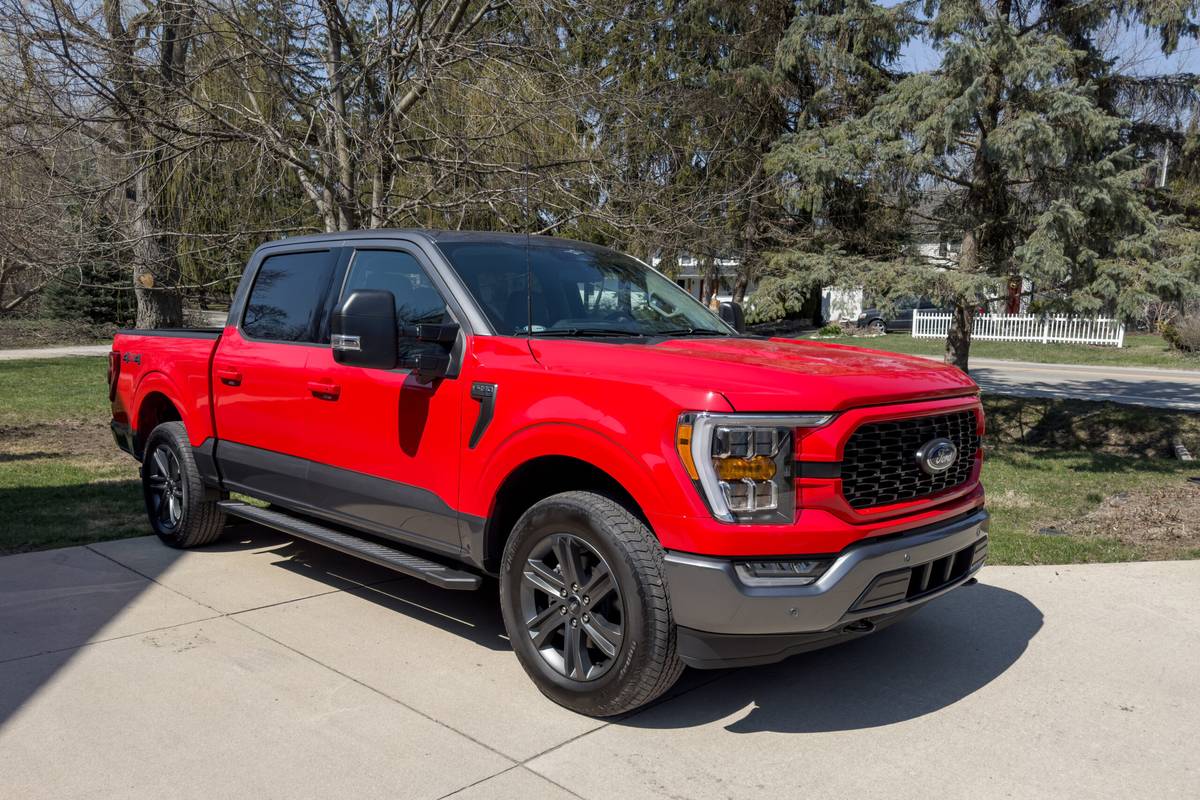
Despite this being an XLT, the bottom line for this two-tone test truck came to just shy of $69,000, including the delivery fee. However, the total includes a lot of equipment, such as a crew-cab body style, four-wheel drive, the upgraded turbocharged 2.7-liter EcoBoost V-6, a heavy-duty towing package, the ProPower Onboard 2-kilowatt generator system and more, including a couple of very interesting options: the Heritage Edition Package — which includes the funky two-tone paint, some unique interior embossing and 20-inch painted wheels — and the aforementioned onboard scales.
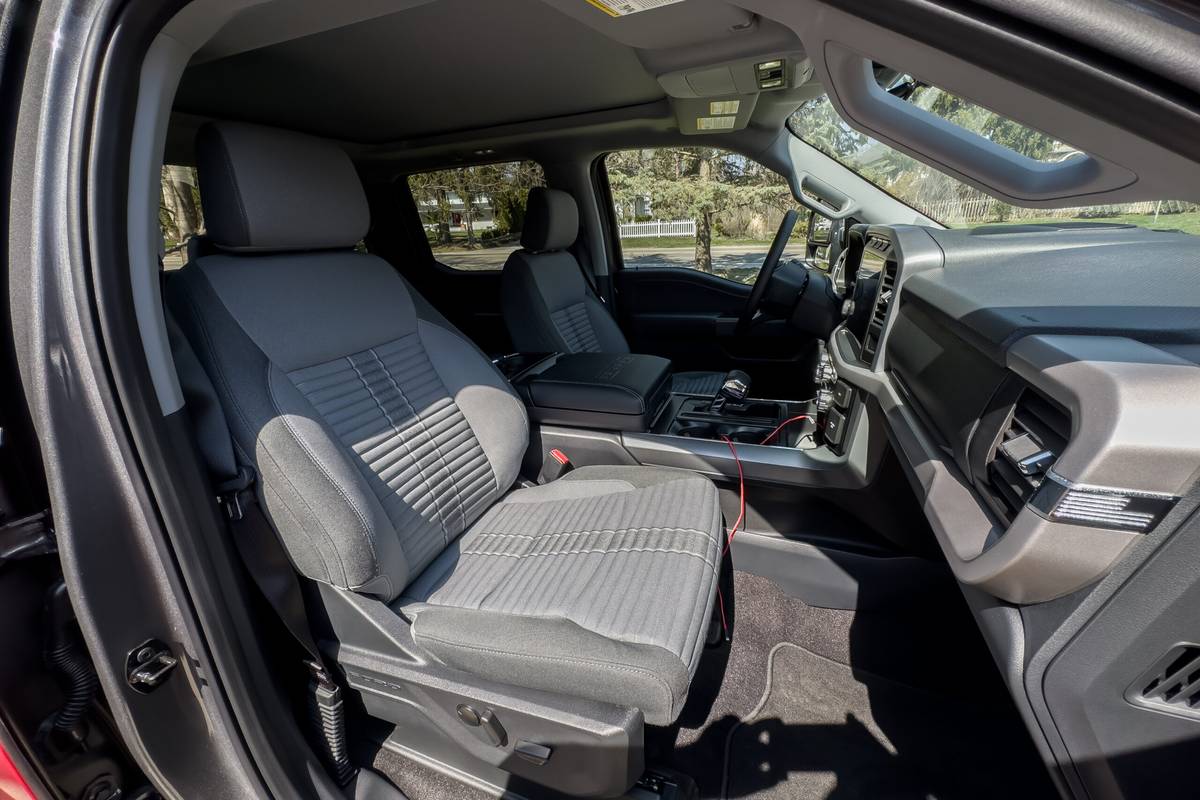
It’s that onboard scale option that really got my attention for this new F-150. The truck’s arrival in my driveway coincided with the need to pick up both dirt and mulch from the local big-box hardware store, providing a perfect opportunity to test the scales to see how well they work. The answer there is “splendidly,” but it did also reveal a remarkable truth about hauling everyday things: Your pickup’s bed probably has more space than load capacity thanks to the trend of stuffing tons of luxury equipment in trucks these days.
The Starting Point
Start up the F-150 and press the Onboard Scales button on the big multimedia screen to see where your truck sits in terms of payload capacity (shown at the top and preprogrammed into the system). For this particular truck, the payload capacity is 1,445 pounds, according to the readout.
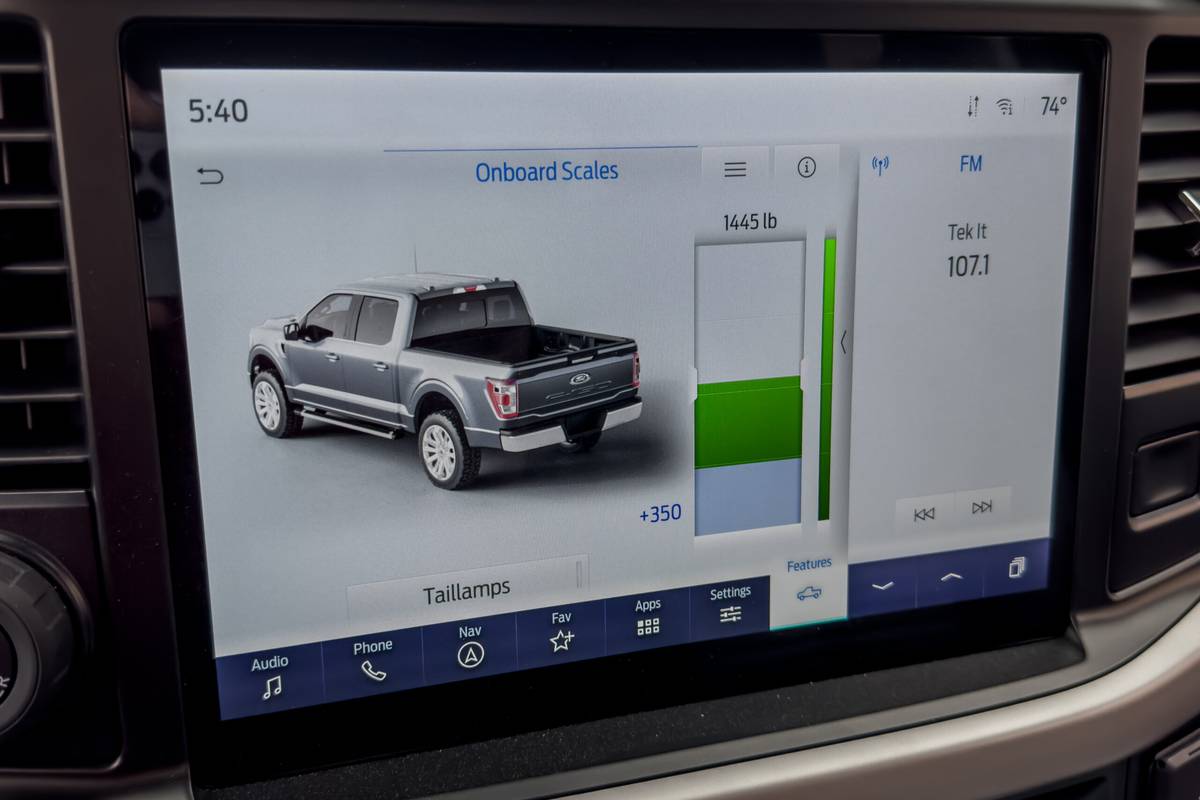
Keep in mind that this is the maximum weight of cargo the truck can carry in its bed — and in its cabin. That means you need to factor your own weight into the load, as well as anyone or anything else you’re taking along with you, plus the weight of the load you plan to haul. For my hubby and I, that was just over 500 pounds (I’m … extra fluffy) off the top before we even loaded anything into the bed. You can set that weight into the computer as a standard condition, and it will show on the scale how much weight you have left to use.
Related Video:
Upon arrival at the hardware store, we purchased 10 bags of mulch and five bags of potting soil and proceeded to load them into the F-150’s bed. (An odd omission: A nearly 70-kilodollar pickup truck doesn’t come with the Ford tailgate step system, something I found to be very curious.) As you load up the cargo bed, you can see your progress versus the payload capacity by four LED lights built into the rear taillights. The lights illuminate from bottom to top, then flash if you’ve gone over the payload limit. You can also see how you’re doing on the multimedia screen or on the FordPass app.
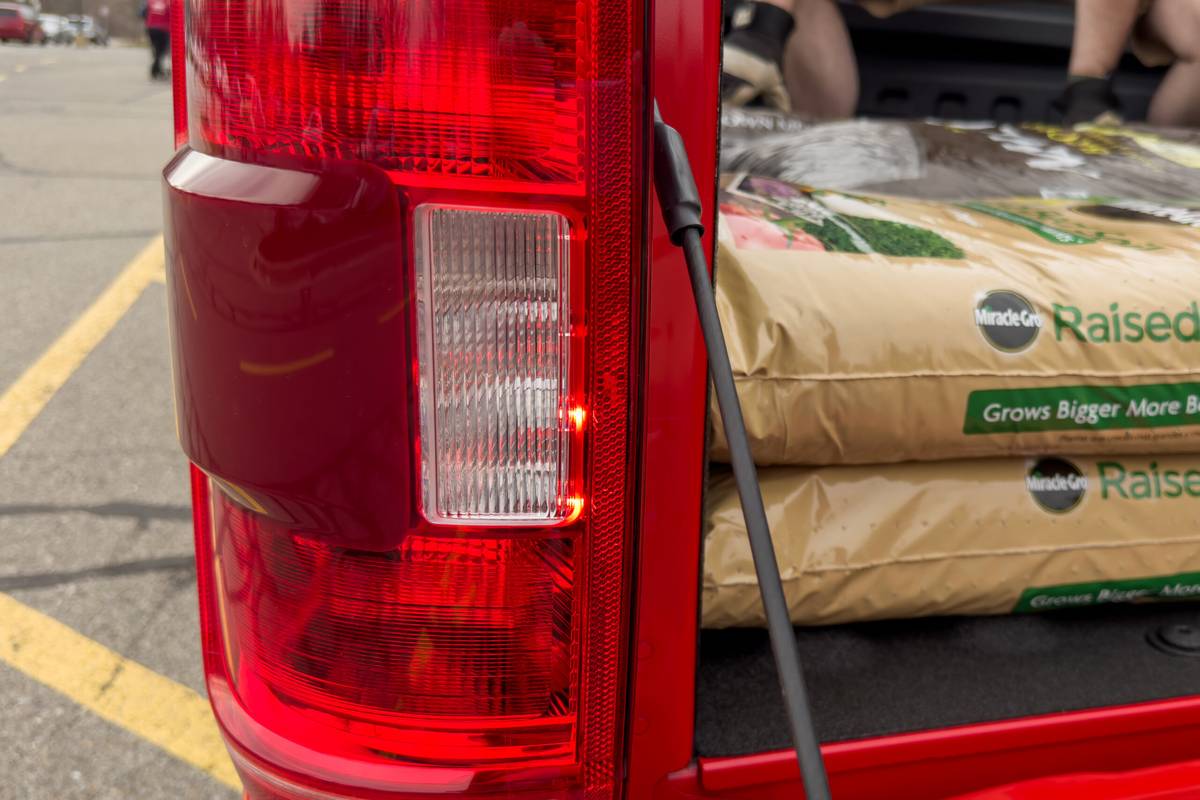
And that’s exactly what we did — the bed was barely half full of bags, but combined with two average-sized Americans onboard, 20 cubic feet of mulch and 10 cubic feet of topsoil went over the payload limit for this massive F-150. The taillight LEDs were flashing, and the scale slider in the touchscreen multimedia system was as red as the truck’s paint.
This leads me to believe that a lot of people are quite likely regularly overloading their pickups with people and cargo stuff on a daily basis. My only complaint about Ford’s onboard scale system is that it doesn’t actually tell you the weight of what’s in the bed — just how close you are to the truck’s limit and if you’ve gone over. It’s more of an estimation game than an actual scale, but it does provide a good at-a-glance representation of your situation.
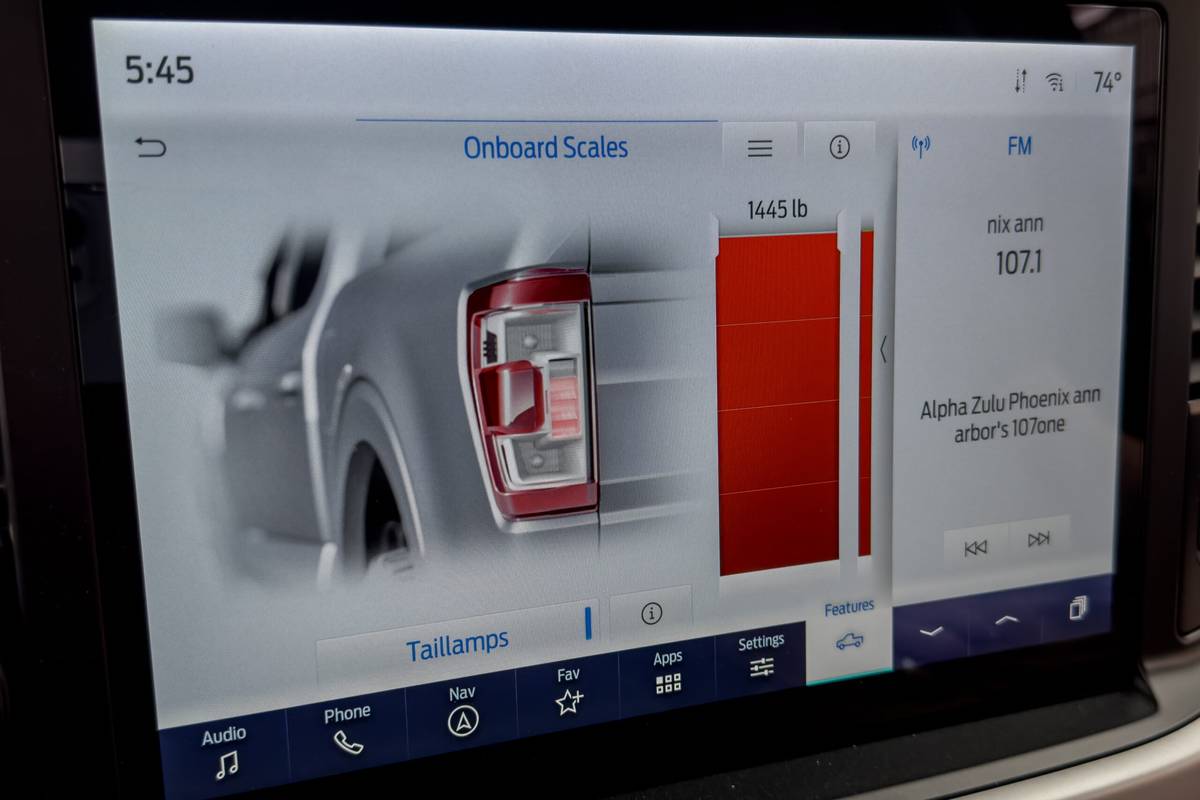
You’d Never Know It’s Overloaded
So clearly, we went over the payload limit with cargo and people, making me wonder how a family of four plus camping gear or five big construction workers plus tools actually works in the latest loaded F-Series half-ton pickups. But the F-150 is a champ, and even exceeding its payload limit (while not recommended) doesn’t upset its behavior in the slightest.
Pop the truck into Tow/Haul mode for the best settings for things like throttle input and shifting, and while you do feel the added weight in the bed, the truck is still level, swift and beautifully under control. The twin-turbo 2.7-liter V-6 makes a more than respectable 325 horsepower and 400 pounds-feet of torque, and while there are four other powertrain choices more powerful than this tiny V-6 available in the XLT, the diminutive turbo V-6 is a perfectly adequate engine for most people’s use.
The F-150’s onboard scales are a neat repurposing of existing onboard tech for alternate uses, and it’s a genuinely valuable feature that’s worth its price. With them, you might find out that you’re regularly exceeding your truck’s payload capacity even in just simple, everyday use and that perhaps a three-quarter-ton or even one-ton truck is more what you need to be safe in your duties or daily routine.
More From Cars.com:
- What We Plugged Into Our Ford F-150 and How It Performed
- Our 2021 Ford F-150’s Active Air Dam Disappeared, as Did $1,110 to Fix It
- Here’s Everything We’ve Towed With Our 2021 Ford F-150 Hybrid
- Life With the Ford F-150: What Do Owners Really Think?
- Research the 2023 Ford F-150
Cars.com’s Editorial department is your source for automotive news and reviews. In line with Cars.com’s long-standing ethics policy, editors and reviewers don’t accept gifts or free trips from automakers. The Editorial department is independent of Cars.com’s advertising, sales and sponsored content departments.

Detroit Bureau Chief Aaron Bragman has had over 25 years of experience in the auto industry as a journalist, analyst, purchasing agent and program manager. Bragman grew up around his father’s classic Triumph sports cars (which were all sold and gone when he turned 16, much to his frustration) and comes from a Detroit family where cars put food on tables as much as smiles on faces. Today, he’s a member of the Automotive Press Association and the Midwest Automotive Media Association. His pronouns are he/him, but his adjectives are fat/sassy.
Featured stories




